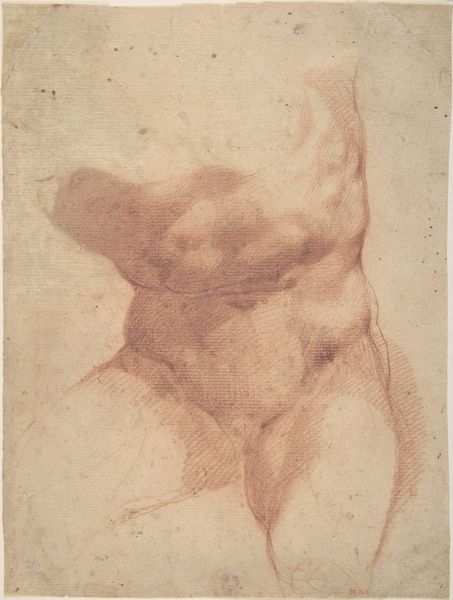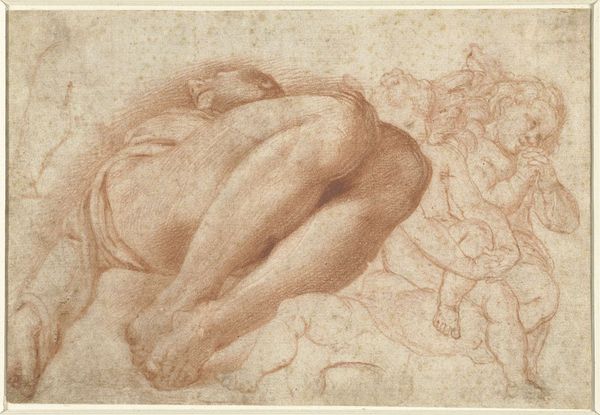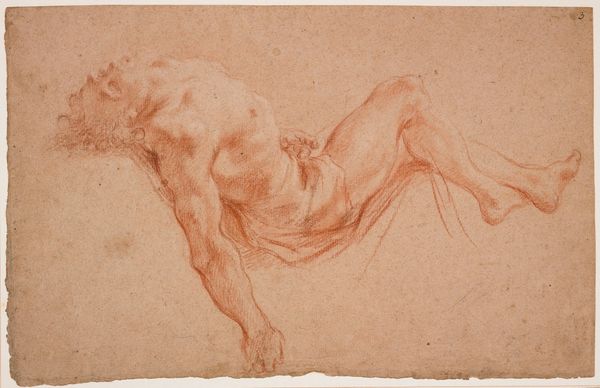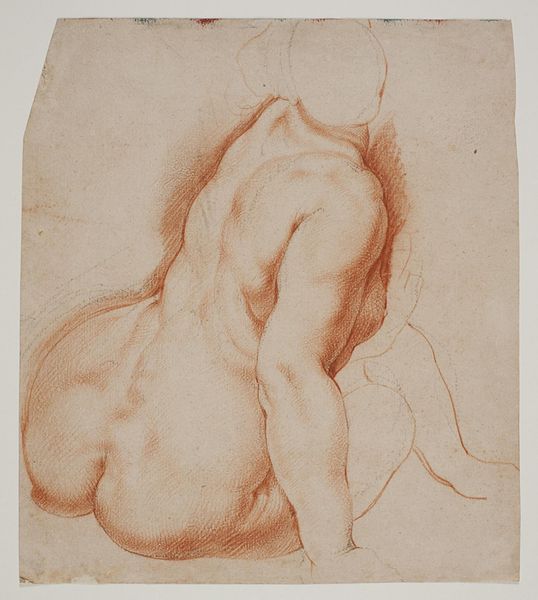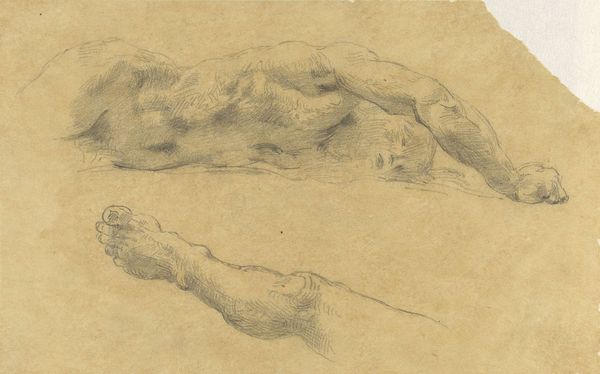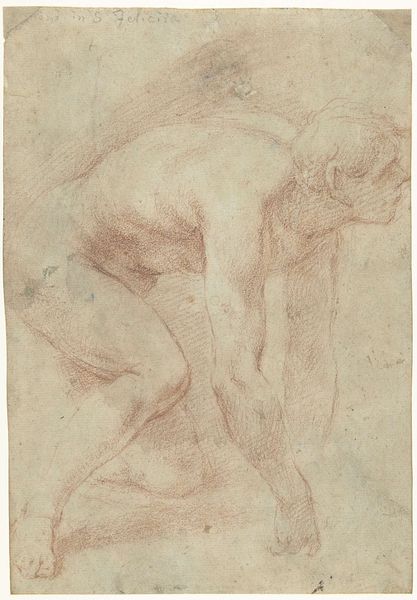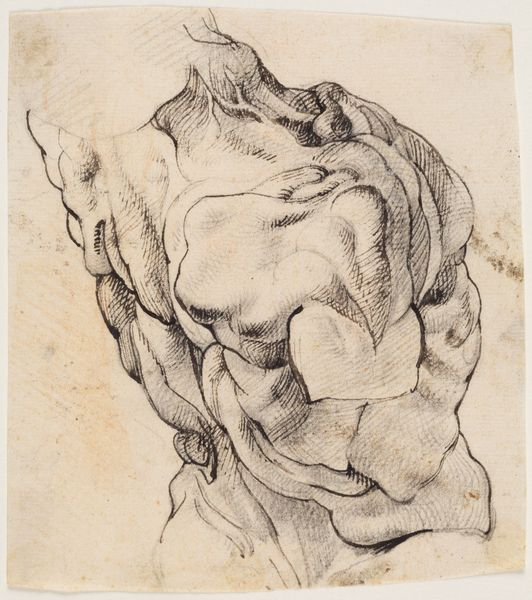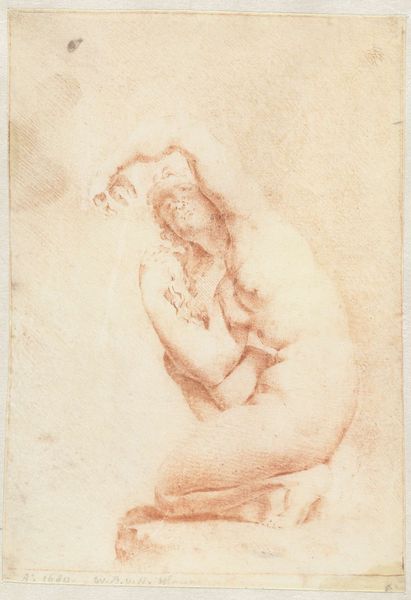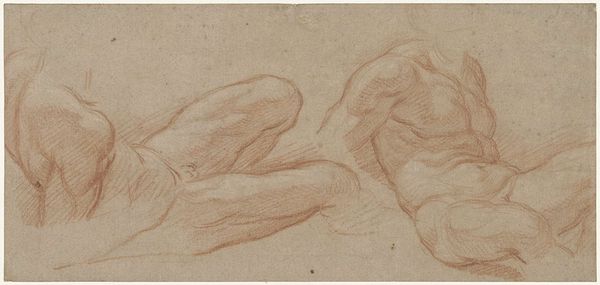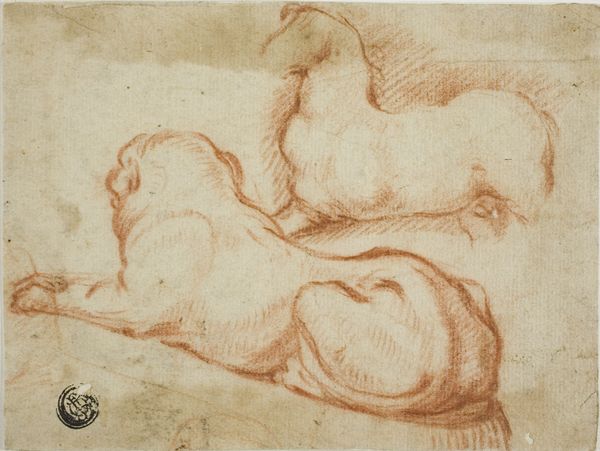
drawing, dry-media, pencil
#
drawing
#
baroque
#
charcoal drawing
#
figuration
#
11_renaissance
#
dry-media
#
pencil
#
academic-art
Copyright: Public Domain: Artvee
Editor: This is Peter Paul Rubens’s “Study of the Torso Belvedere,” likely created sometime between 1577 and 1640 using pencil and other dry media. The almost monochromatic red chalk gives the figure a warm, sculptural feel. It makes me wonder, what did Rubens see in this sculpture that inspired him? Curator: What a beautiful question. You know, standing here, I’m struck by the palpable sense of energy Rubens manages to capture in what is, essentially, a copy. It’s as if he’s not just recording what he sees, but internalizing the Belvedere Torso’s strength and dynamism, channeling it through his own artistic temperament. Editor: I see what you mean. There’s something very alive about it, even though it's a fragment of a sculpture. Curator: Absolutely! It's about the twist of the torso, the muscular tension, translated onto the page with such vitality. Rubens wasn't just an artist; he was an alchemist, turning observation into a spark of creation. Think about the endless interpretations this pose invites! A weary Hercules? A triumphant athlete? The ambiguity is its power. Doesn't this make you want to run into your studio right away and start creating?! Editor: It does! It’s a little intimidating, but definitely inspiring. I guess that’s the point, isn't it? Curator: Precisely. These Renaissance artists were hungry for knowledge. Copying classical sculptures like the Torso Belvedere was a path toward their own masterpieces. And seeing Rubens interpret it like this helps me rediscover it too, and the timeless vitality that moves across centuries and artists.
Comments
No comments
Be the first to comment and join the conversation on the ultimate creative platform.
